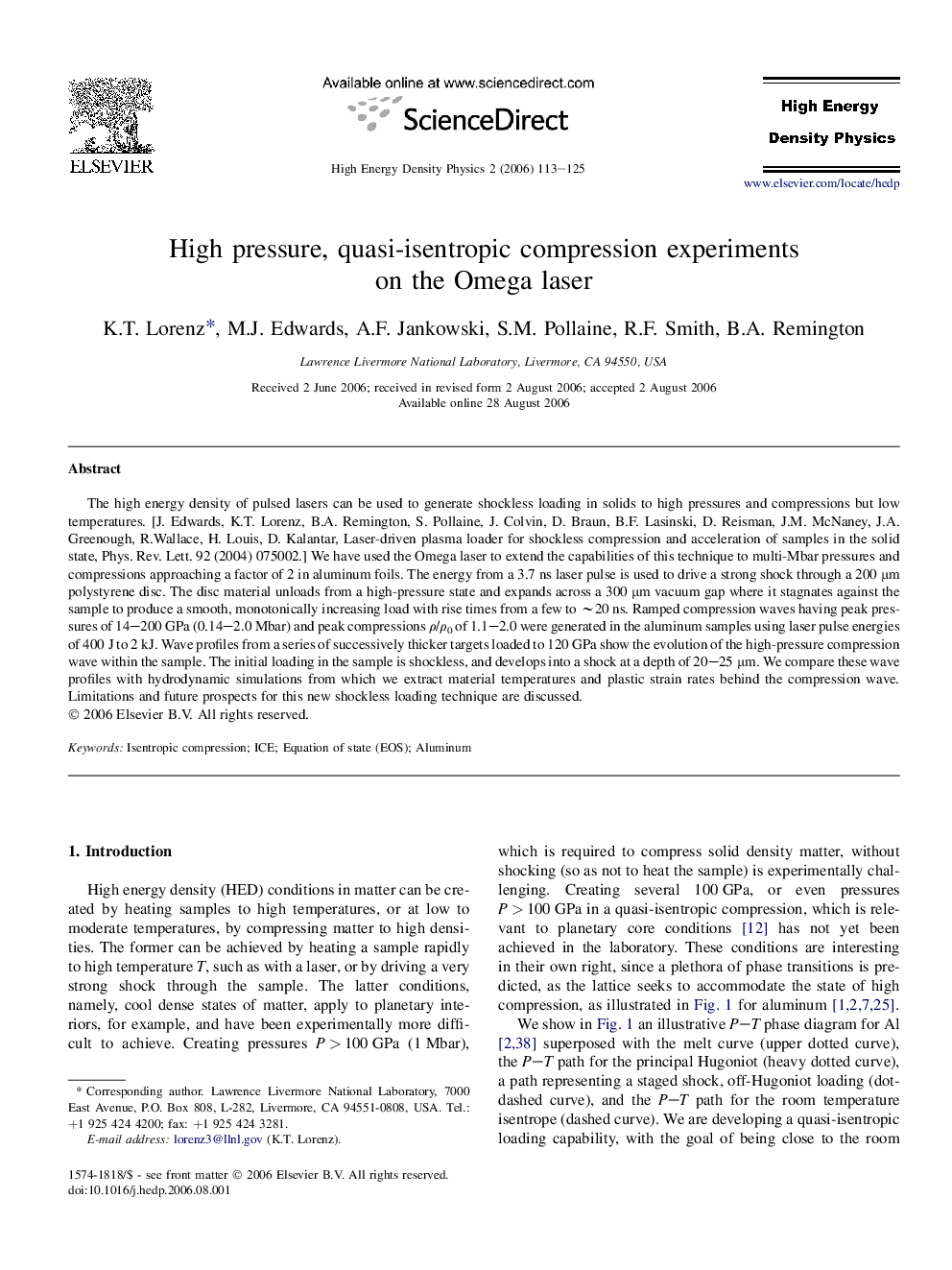| Article ID | Journal | Published Year | Pages | File Type |
|---|---|---|---|---|
| 1772760 | High Energy Density Physics | 2006 | 13 Pages |
Abstract
The high energy density of pulsed lasers can be used to generate shockless loading in solids to high pressures and compressions but low temperatures. [J. Edwards, K.T. Lorenz, B.A. Remington, S. Pollaine, J. Colvin, D. Braun, B.F. Lasinski, D. Reisman, J.M. McNaney, J.A. Greenough, R.Wallace, H. Louis, D. Kalantar, Laser-driven plasma loader for shockless compression and acceleration of samples in the solid state, Phys. Rev. Lett. 92 (2004) 075002.] We have used the Omega laser to extend the capabilities of this technique to multi-Mbar pressures and compressions approaching a factor of 2 in aluminum foils. The energy from a 3.7 ns laser pulse is used to drive a strong shock through a 200 μm polystyrene disc. The disc material unloads from a high-pressure state and expands across a 300 μm vacuum gap where it stagnates against the sample to produce a smooth, monotonically increasing load with rise times from a few to â¼20 ns. Ramped compression waves having peak pressures of 14-200 GPa (0.14-2.0 Mbar) and peak compressions Ï/Ï0 of 1.1-2.0 were generated in the aluminum samples using laser pulse energies of 400 J to 2 kJ. Wave profiles from a series of successively thicker targets loaded to 120 GPa show the evolution of the high-pressure compression wave within the sample. The initial loading in the sample is shockless, and develops into a shock at a depth of 20-25 μm. We compare these wave profiles with hydrodynamic simulations from which we extract material temperatures and plastic strain rates behind the compression wave. Limitations and future prospects for this new shockless loading technique are discussed.
Related Topics
Physical Sciences and Engineering
Physics and Astronomy
Astronomy and Astrophysics
Authors
K.T. Lorenz, M.J. Edwards, A.F. Jankowski, S.M. Pollaine, R.F. Smith, B.A. Remington,
